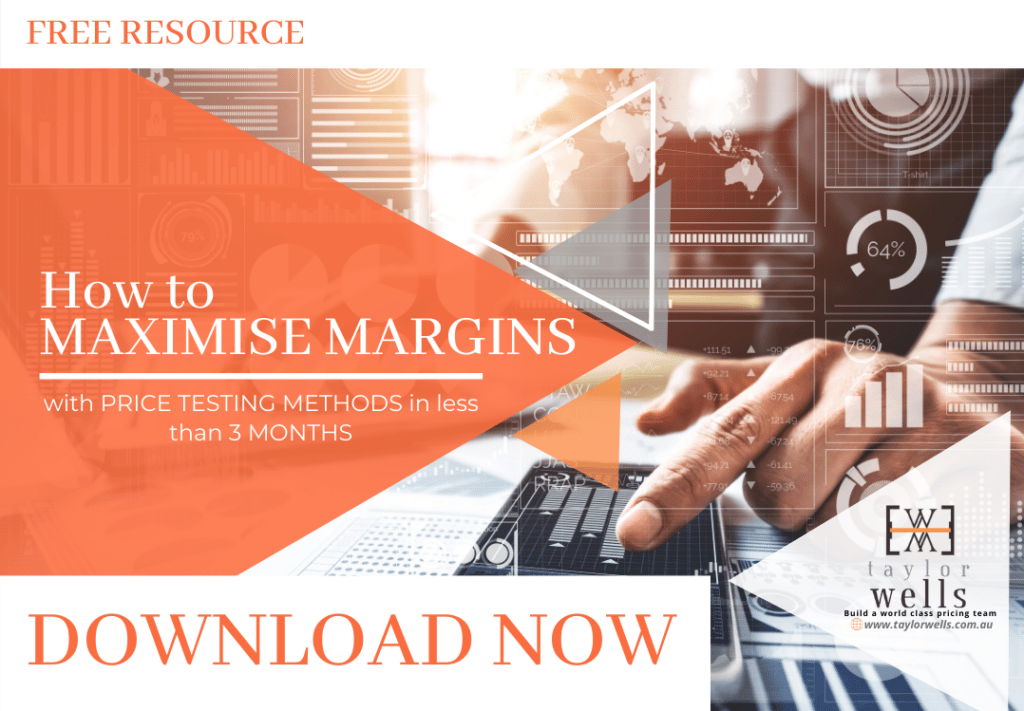
How to Drive a Successful Commercial Strategy in the Business 📊
In the face of uncertainty in major industries like the oil market, automotive, manufacturing, robotics industry, looking into the future can be challenging and overwhelming. So, how do you do plan for the future in a way that is backed up by research and data, rather than plain guesstimates? How can you discover the phases of strategic planning and the usual time frame? And more particularly, how can it ensure your sustainability in the future?
In this article, we show you how you can plan beyond imaginary numbers. We guide you that research on trends, innovation, and data analysis should often be revisited as part of your planning.
At Taylor Wells advisory, our consulting work over the years shows that predicting future outcomes on pricing, products/services, and marketing put businesses ahead of the competition. But how do you seek the balance between accurate predictions about the future and adapting quickly when things turn out differently?
>Download Now: Free PDF How to Maximise Margins
Oftentimes, the changes that business leaders try to address are years apart such as those in global trade, technological discovery, and emerging technology. This is where discord between your predictions and the research or data evidence can occur. More interestingly, people generally avoid long-term time frames. But why is this?
The human brain can easily count by 10s and 5s rather than even numbers. That’s why linear time frames such as 0s and 5s seem to give a sense of control and hope over the uncertain future.
But the answers to foundational concerns aren’t necessarily up to the fixed dates that seem to give some assurance and contained chaos. This requires evolution and transformational action to address challenges that happen over time.
As businesses perform this, the management starts to fall into the trap of lacking predictability. And those that become used to short-term solutions perceive themselves as victims of change. They’re unable to cope or adjust to external pressures.
Plan like a Futurist – What is the Main Purpose of Strategic Planning?
Strategic planning is quite different from a business plan. It requires you to set goals that you envision for your organisation in the next 3-5 years or longer. You must identify the actions that you need to achieve the goals you’ve set. You also need to take a second look at your daily operations and question your alignment of priorities with the direction you’re headed in the near future. Specifically, you will want to know where you are, where you want to take your company, and what you can do to get there.
What is your position in the market?
This answers where your company is at the moment. It includes every aspect of your operations from profitability, key value drivers, team culture, and how you’re faring against competitors.
Where do you want to go?
This asks you to look into your vision, mission, values, and long-term objectives as a company. You need to identify your competitive advantage is in the market and your focus as a business. A time cone, in some cases, is more befitting than linear timelines. Why? Because a time cone focuses on:
- What your tactics are in the next 2 years
- Your strategy in the next 5 years
- Your vision for the next 10 years
- How do you manifest evolution in your operational processes beyond the 10 years?
What can you do to get there?
It requires you to implement necessary changes in to your team structure, pricing, sales, and marketing teams. Siloed departments should change too. In fact, cross-functioning teams from sales, pricing, finance, and marketing work best together. In this way, management teams can execute well-informed decisions more openly and innovatively than siloed teams.
Apart from this, you should set deadlines as to when you expect to achieve the goals that you’ve set. There should also be evaluation tools or metrics available that measure the success of your efforts or activities. Then, you can use the information to analyse the biggest weaknesses or challenges you’re facing at the moment – and which areas you can improve on.
The Phases of Strategic Planning Time Frame
Back in the 2000s, fast-paced innovative technologies increasingly threatened newspapers. And so they had to rethink the future of how readers consumed news and the best platforms to deliver it. Most of them had planned within a timeline of 3-5 years. But they also hesitated to think beyond those 3-5 years time frame. They felt that it was quite far into the future.
And so, little did they know that as businesses lack the vision when executing an action plan, it affects the chances and new opportunities in taking control of the industry.
Due to the lack of long term planning, almost 2,000 newspapers had to close down in the last decade. They could have capitalised on income streams in digital advertising and mobile content during the transition into smartphones.
For others, they focused on creating their own apps and redesigning their websites without looking further than that. In other words, some survived and some didn’t.
The Phases of identifying what is the Main Purpose of Tactical & Strategic Planning with realistic Time Frame
Identify where you want to succeed and make an impact whether it is for growth opportunities or mitigating risks. In most cases, 2 years is the most ideal time frame to start where there is available evidence and data from the most recent and updated research. This enables you to work on highly probable events, putting you at an advantage.
You also have to be able to restructure or improve your products/services, find cross-selling opportunities, and expand into a new target market. Apart from that, you need to ask what your priorities are. What does your team management look like? Also, consider where or how you distribute your resources
Because the inability to do this will leave you playing catch up with other businesses and unable to get ahead of the competition. Or let alone be competitive. It will put you in a position where you’re more exposed and vulnerable to market disruptions or other global crises.
STRATEGY – Discovering the Phases of What is the Main Purpose of Strategic Planning & expected Time Frame
As your business figures out its tactical plans, its strategies should also be aligned with priorities. As it looks into the 2-5 years time frame and tactics often become confused with strategy. Predicting the future becomes less clear. And as teams identify the right path to take, strategies should help define if resources and investment are being put in the right priorities.
Although there may be more unpredictability as you go on redefining your company’s vision, you also need to accept the uncertainty of future outcomes.

VISION – The Phases in discovering what is the main purpose of Strategic Planning and its Time Frame
Redesigning your vision in 10-15 years will include repetitively performing tactical and strategic planning as trends evolve. These should be based on research on emerging technology, innovations, global trends, and the status of the economy.
Management teams should invest in their future teams as they grow bigger. But they also should be positioned with the organisation’s ability to evolve and adapt to ever-changing market trends and innovative technology.
EVOLVE – What are the Phases of Strategic Planning and Expected Time Frame?
Although 10-15 years is more difficult to calculate and predict, ignoring this part of the planning will likely let you fall into the market follower strategy. This will affect your market share and ability to lead or disrupt the industry. So, focus on where you visualise the company to move forward to in that timeline.
Backed up by research and data from current events, the first step of your planning should be based and set on the current trends and development before you can even move forward within the time cone.

Smartphones: What is the main purpose of strategic planning?
Take the first smartphone in the early 1990s (IBM’s Simon Personal communicator), for instance. It had most of the features that smartphones use today like fax and e-mailing, Stylus, and touchscreen capability.
Although personal mobile phones already existed in the 1970s. Phones were connected to the internet for the first time in the 2000s. This allowed large file sizes exchanges and featured more interactions.
Imagine if IBM had been able to capitalise on these opportunities. They could’ve done well in their tactical planning, vision redefinition, and strategies. There would’ve been a boom in the advertising, e-commerce, and digital industries at this particular time.
Apple’s Newton also failed at around this time when it was released in 1993. Because of its underdeveloped handwriting recognition technology.
Similarly, the future of small delivery vehicles and transportation may be fueled by events such as global warming and the increasing elderly population.
This has become obvious in recent months with a drone delivery service like Wing across Australia. Its selling point includes cutting through traffic jams, delivering fresh food and cold beverages quickly while minimising car accidents.
Emerging trends like artificial intelligence and SaaS that giants like Google and Amazon have been experimenting on small vehicles that can load up packages, supplies/commodities, and even travellers.
And looking into the future, it’s quite likely that these cars will become autonomous vehicles or self-driving modes of transport and delivery. For instance, it’s also possible that new customers of mini-golf carts will include supermarkets, laboratory hospital services, and pharmacies.
On the other hand, a manufacturer of autonomous vehicles also needs to be competitive in its specialised skills, expertise, and supply chain flow.
〉〉〉 Get Your FREE Pricing Audit 〉〉〉
Bottomline
Time cones can help you visualise and represent your future predictions in the midst of unpredictable situations. You can redefine and revisit each category often. This includes redesigning operations and processes within your team, collaborating with new partners, and recruiting the right talent.
To evolve and make important decisions within each time frame, flexibility and the right experience within the research and development teams are needed. This is applicable to pricing, marketing, and sales team in maximising decision-making skills.
Aside from that, current events and customer behaviour patterns help you stay ahead of the most recent developments. This also lets you position your business with more control and adaptability, instead of basing it on skip-counting to 5s and 10s. Ultimately, redefining both your short-term and long-term strategic vision will help you remain resilient in responding to constantly changing market trends.
For a comprehensive view on driving pricing strategies to maximise growth,
Download a complimentary whitepaper on How to Drive Pricing Strategy to Maximise EBIT Growth.
Are you a business in need of help to align your pricing strategy, people and operations to deliver an immediate impact on profit?
If so, please call (+61) 2 9000 1115.
You can also email us at team@taylorwells.com.au if you have any further questions.
Make your pricing world class!
Related Posts
Leave a Reply Cancel reply
Categories
- marketing strategy (26)
- Organisational Design (14)
- Podcast (114)
- Pricing Capability (87)
- Pricing Career Advice (10)
- Pricing Recruitment (19)
- Pricing Strategy (292)
- Pricing Team Skills (13)
- Pricing Teams & Culture (25)
- Pricing Transformation (48)
- Revenue Model (25)
- Sales Effectiveness (27)
- Talent Management (7)
- Technical Pricing Skills (35)






